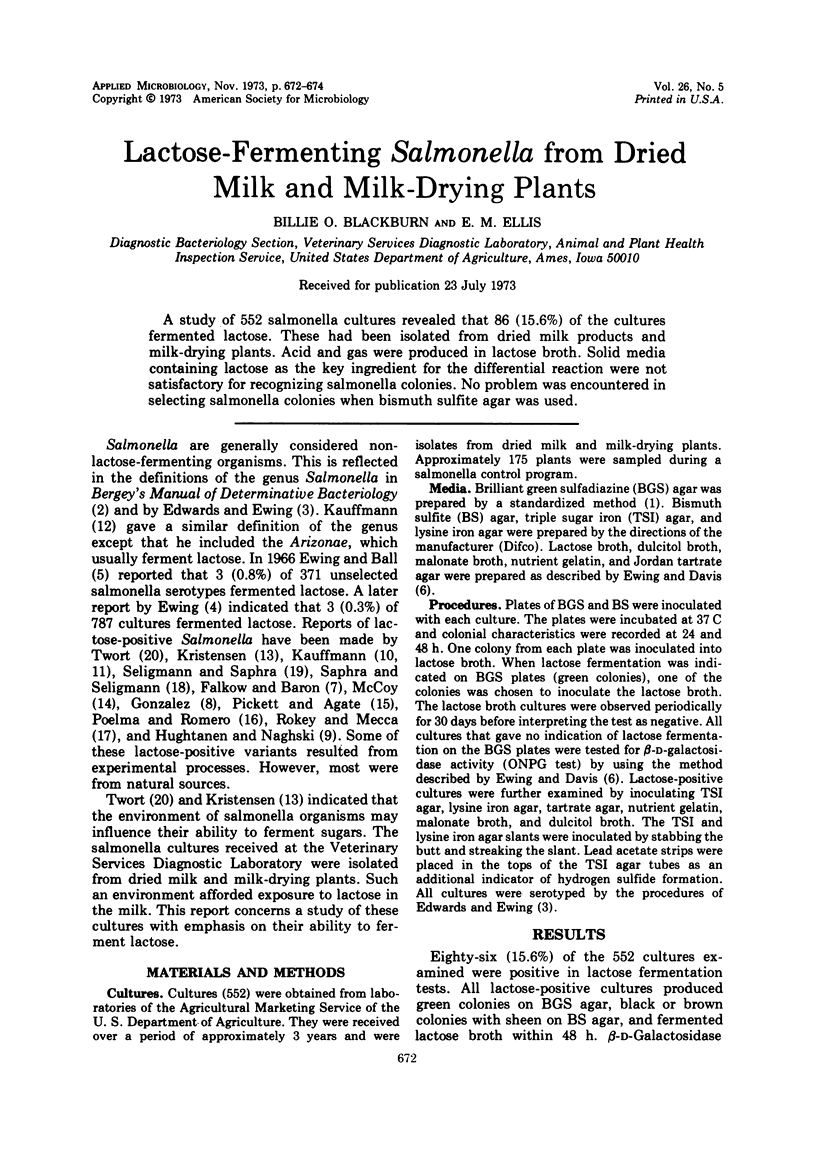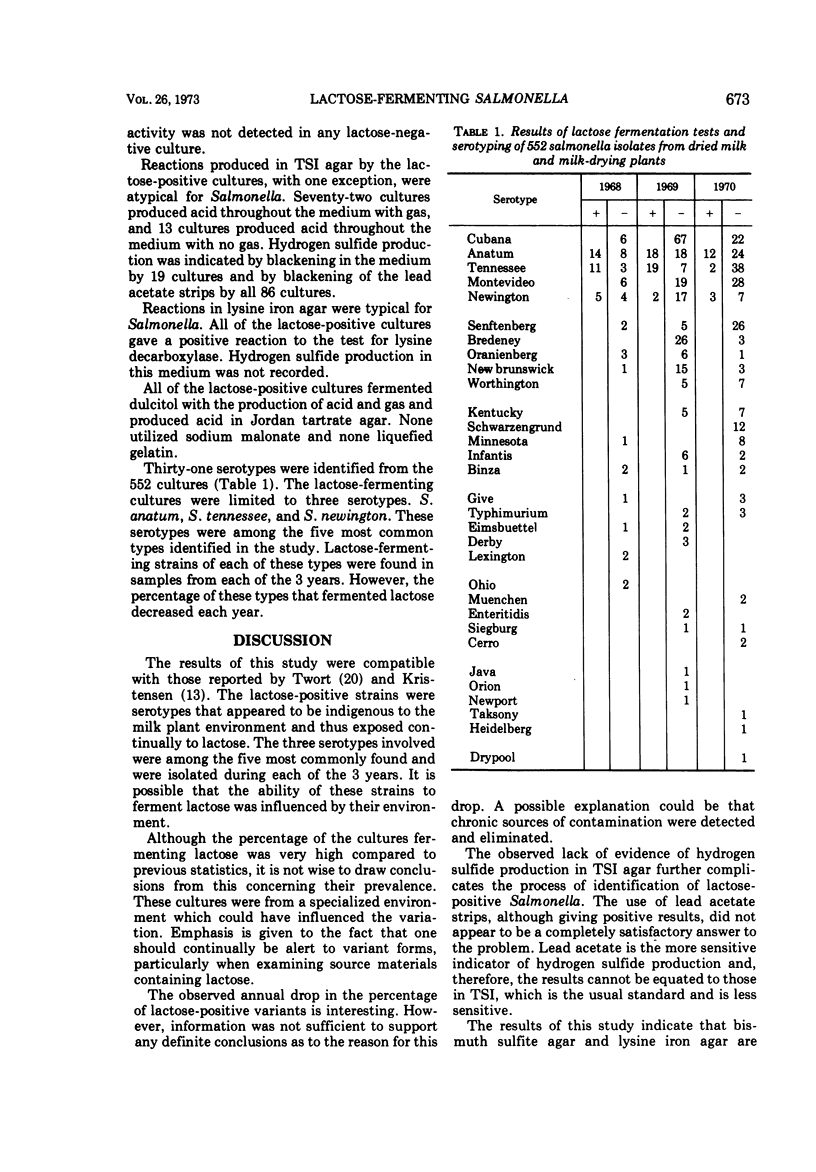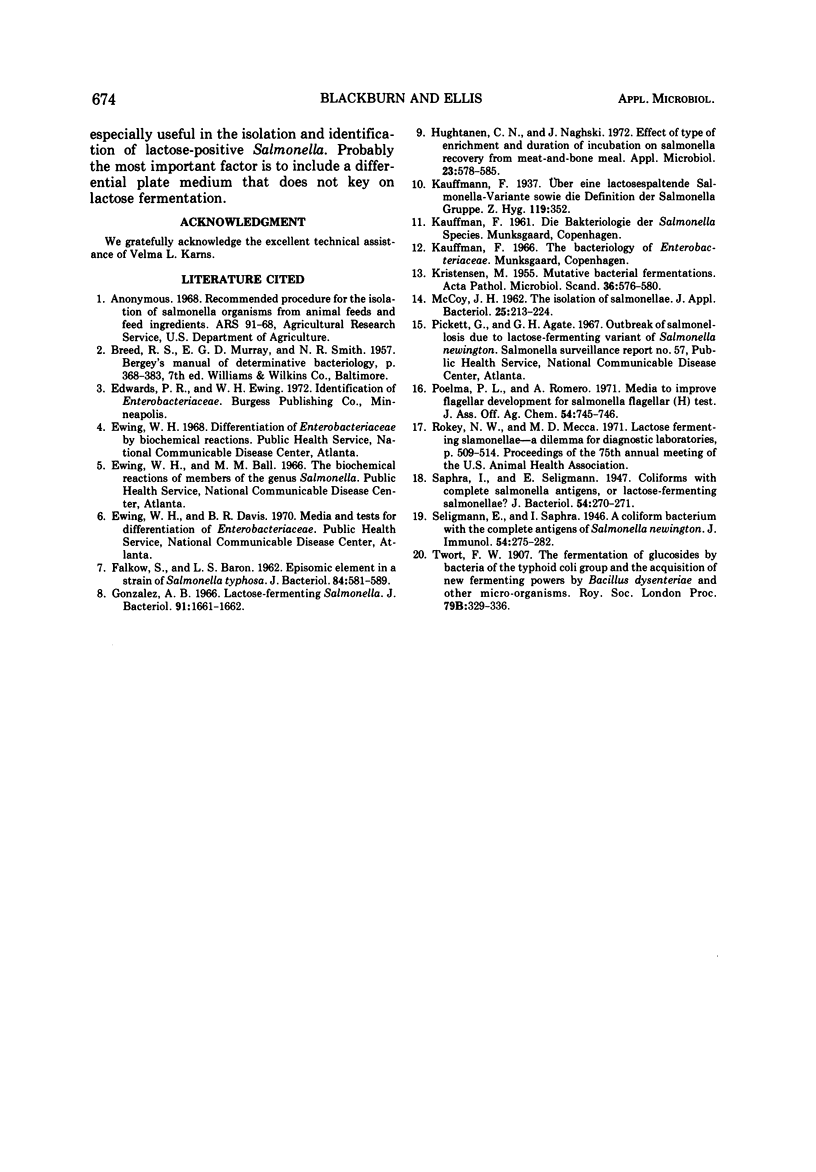Abstract
A study of 552 salmonella cultures revealed that 86 (15.6%) of the cultures fermented lactose. These had been isolated from dried milk products and milk-drying plants. Acid and gas were produced in lactose broth. Solid media containing lactose as the key ingredient for the differential reaction were not satisfactory for recognizing salmonella colonies. No problem was encountered in selecting salmonella colonies when bismuth sulfite agar was used.
Full text
PDF


Selected References
These references are in PubMed. This may not be the complete list of references from this article.
- Falkow S., Baron L. S. EPISOMIC ELEMENT IN A STRAIN OF SALMONELLA TYPHOSA. J Bacteriol. 1962 Sep;84(3):581–589. doi: 10.1128/jb.84.3.581-589.1962. [DOI] [PMC free article] [PubMed] [Google Scholar]
- Gonzalez A. B. Lactose-fermenting Salmonella. J Bacteriol. 1966 Apr;91(4):1661–1662. doi: 10.1128/jb.91.4.1661-1662.1966. [DOI] [PMC free article] [PubMed] [Google Scholar]
- Huhtanen C. N., Naghski J. Effect of type of enrichment and duration of incubation on salmonella recovery from meat-and-bone meal. Appl Microbiol. 1972 Mar;23(3):578–585. doi: 10.1128/am.23.3.578-585.1972. [DOI] [PMC free article] [PubMed] [Google Scholar]
- KRISTENSEN M. Mutative bacterial fermentation. Acta Pathol Microbiol Scand. 1955;36(6):576–580. doi: 10.1111/j.1699-0463.1955.tb04656.x. [DOI] [PubMed] [Google Scholar]
- Poelma P. L., Romero A. Media to improve flagellar development for Salmonella flagellar (H) test. J Assoc Off Anal Chem. 1971 May;54(3):745–746. [PubMed] [Google Scholar]


